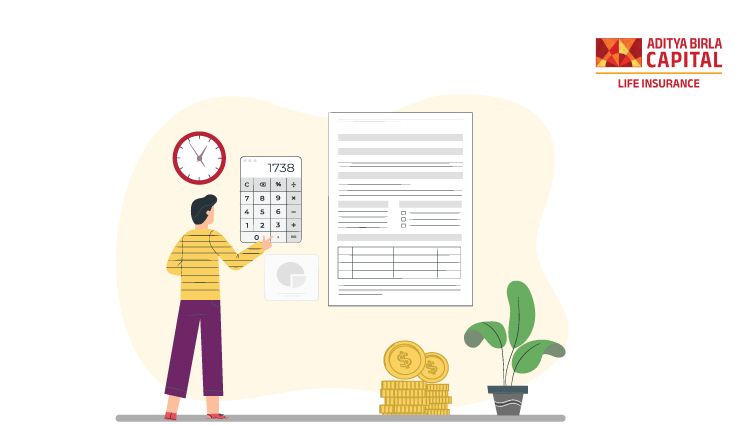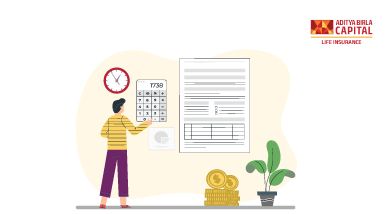Investment is crucial for realising your aspirations. It is the sole means to enhance your future prospects. By investing, you not only grow your wealth but also create a savings cushion for unforeseen circumstances. Furthermore, consistent investment instils financial responsibility over time by requiring you to set aside a portion of your income consistently.
What is the difference between investing and saving?
Saving refers to the difference between your income and expenses. Typically, these savings are kept in a savings account or fixed deposit at a bank, offering a low but secure interest rate and readily available when needed (high liquidity). On the other hand, these funds can also be invested for the purpose of accomplishing long-term objectives. Although some investments may experience fluctuations in value over time, informed investments have the potential to earn significantly higher returns compared to savings accounts at banks.
It is important to consider the impact of inflation on your investments. Inflation refers to the increase in the cost of goods and services, causing the value of the currency to decrease, leading to reduced purchasing power over time. Savings often fall short of keeping pace with inflation, whereas investments have the potential to outpace it.
The fundamental difference between savings and investments is that savings represent idle cash, whereas investments facilitate the growth of your funds over time. Short-term needs can be met with savings, but long-term goals require investments. While savings primarily serve to safeguard your principal, investments aim to maximize returns.
The power of compounding
The most effective and secure method of building wealth is through the remarkable force of compounding. By investing your money in an instrument that generates returns and reinvesting those earnings as they accrue, your investment can grow exponentially over time. For instance, if you were to set aside 5000 each month starting at age 25 and earn an interest rate of 10% annually, after 60 years you would accumulate funds worth over 1 crore. However, if you were to start saving the same amount and rate of interest at age 40, the total accumulated would only be around 33 lakhs. Therefore, it is advisable to begin saving as early as possible to take full advantage of the power of compounding.
Understanding your investment objectives
The key to ensuring a successful investment experience is by understanding your investment goals and working towards them.
There are three primary investment objectives: safety, returns, and liquidity. Ideally, an investment should be completely safe, provide substantial returns, and offer high liquidity. However, it is challenging to optimize all three objectives simultaneously, as one often comes at the cost of another. For instance, if one wants high returns, one may have to accept more risk; and if one prioritizes high liquidity, one may have to compromise on returns.
It is crucial for individuals to create a comprehensive financial goal statement, which outlines as many needs as possible. This statement serves as the foundation for creating a financial plan, tailored to the individual's unique circumstances such as age, career stage, family size, and dependents. Some needs may be precisely determined, while others may be estimated. It is also important to make provisions for unexpected expenses that may arise. If the individual's savings are insufficient to meet all of their goals, they must prioritize them. The financial plan should be regularly reviewed to accommodate changes in circumstances.
There are investment opportunities that range from high risk to low risk, and each of these options is considered an asset class. Investors must allocate their savings to one or more asset classes based on their individual circumstances.
Types of Investments for Beginners
The following are some of the types of investments you can consider when you’re building a portfolio:
-
Capital Markets
The capital market is considered to be both the most challenging and the most rewarding of all investment options. In the capital market, companies and governments raise long-term funding from public investors, and investors can then trade these securities, which include both equity and debt.
-
Equity Shares
Starting a new business typically requires personal savings from the entrepreneur and, if necessary, contributions from friends and relatives. For larger projects that require more funding, term loans and other sources of capital may also be necessary. One alternative to relying solely on personal savings or contributions from a small circle of friends and relatives is to raise equity by selling shares to the public through a process known as a public issue.
Through this mechanism, small amounts of money from a large number of individuals can be aggregated into usable capital for businesses. For example, even a small investment of Rs. 5,000 from a large number of individuals can contribute to the development of a Rs. 5,000 crore telecom plant.
When shareholders want to sell their shares, they can do so on the secondary market through stock exchanges and brokers. Companies that raise money from the public are required to list their shares on a stock exchange for nationwide trading.
It is important to note that buying and selling shares in the secondary market does not reduce or alter a company's capital.
As a shareholder, you have a stake in the company and are entitled to all the privileges of ownership, including dividends, which are a portion of the company's profits distributed to the owners. If the company performs well over time, other investors may become interested in owning shares, leading to an increase in demand and price. By choosing the right company and selling your shares at a higher price, you can potentially increase your wealth. On the other hand, making an incorrect choice can result in loss. Therefore, it's crucial for an investor to make an informed decision.
Regarding equity, it is a suitable investment option for individuals who are willing to take risks in pursuit of higher returns. Over the long term, equity shares have historically generated higher returns compared to other investment options. For example, as of March 31, 2011, the BSE Sensex had a compounded annual return of 17.6% over the last 10 years.
- Debentures and Bonds
There are three main types of debt securities:
- Non-convertible debentures (NCD) - The full amount is redeemed by the issuer at a specified time.
- Partially convertible debentures (PCD) - A portion of the value is redeemed and the remaining is converted to equity shares at a set price and time.
- Fully convertible debentures (FCD) - The full value is converted into equity at a specified price and time.
Debentures and bonds are agreements in which one party is the lender (investor) and the other is the borrower (company). These agreements detail the interest rate, the frequency of interest payments (monthly, quarterly, or annually), and the maturity date for repayment of the principal amount (such as after 3, 5, or 7 years). "Bonds" refer to debt instruments issued by the central and state governments and public sector enterprises, while "debentures" refer to debt issues from the private corporate sector. These securities are usually secured or charged against the company's assets and are required to be rated by credit rating agencies.
Debentures and bonds are ideal for investors seeking a steady and reliable source of income. They typically offer interest rates higher than those of bank fixed deposits and some offer tax benefits2 to the investors.
- Mutual Funds
The capital market can be challenging for individuals who lack the knowledge, skills, or resources to make informed investment decisions. The process of choosing the right securities from a vast number of options, monitoring investments, and deciding when to exit involves considerable time and expertise that many small investors may not have. To be successful in the capital market, one must also be able to manage risks by creating a diversified portfolio, which requires significant capital.
Mutual funds provide a solution to these challenges by serving as a professional intermediary between the investor and the capital market. By collecting funds from multiple investors, mutual funds pool these resources and invest in a range of equity and debt instruments with the help of experienced professionals. Investors are issued units based on their contributions, and management fees are charged to cover the costs of running the fund. Any profits or losses made by the mutual fund are shared with the investors according to their investments. This makes mutual funds an attractive alternative to direct investing.
The performance of a mutual fund is reflected by its Net Asset Value (NAV). The NAV per unit is calculated by dividing the market value of the securities in the fund by the number of units outstanding. As the market value of the securities can change daily, the NAV of the fund also changes. Mutual funds are required to disclose their NAV on a daily basis.
- Company Fixed Deposits
Company Fixed Deposits are investment options where individuals lend money to companies for a fixed period, usually ranging from 6 months to 3 years. This type of investment is similar to a traditional bank deposit but carries a higher level of risk and offers higher returns. Companies use these deposits to borrow funds from small investors, which helps mobilize household savings for productive purposes.
When investing in Company Fixed Deposits, it's important to consider several key factors, such as the investment period, safety, and return. It's essential to choose the investment period carefully, as most Company Fixed Deposits are not easily redeemable prior to maturity.
Additionally, Company Fixed Deposits are considered unsecured, which means they are not as safe as bank deposits. However, they offer higher returns than traditional bank fixed deposits due to their higher level of risk. It's also important to note that ratings from credit rating agencies can serve as a guide for determining the safety of Company Fixed Deposits.
- National Pension System (NPS)
A person can create a retirement fund during their working years by making regular contributions to the National Pension System (NPS). The minimum annual contribution is Rs.6,000. The contributions are invested by the Pension Fund Manager (PFM) selected by the investor in the investment option of their choice, either Active Choice or Auto Choice.
Active Choice allows the investor to choose from three asset classes - Equity, Government securities, and Non-government debt. On the other hand, the Auto Choice option automatically allocates contributions to the three asset classes based on the investor's age. Upon subscribing to the NPS, the investor is assigned a Permanent Pension Account Number (PPAN) that remains constant even if the investor changes their PFM, location, or employer.
The returns from the NPS depend on the investment option chosen and charges are applicable as set by the Pension Fund Regulatory and Development Authority (PFRDA). At the age of 60, a minimum of 40% of the accumulated amount in the account must be used to purchase a pension scheme from an insurance company. This will provide the investor with a monthly pension.
The remaining 60% of the account can be withdrawn or used to purchase another annuity. Annuity or pension policies are products of insurance companies that provide a guaranteed1 income either for life or for a specified period without any insurance coverage.
- Government Schemes
The government offers several savings and investment options for citizens:
a. National Savings Certificates (NSC)
- A widely popular tax savings scheme, available throughout the year
- Offers an interest rate of 8%
- The minimum investment is Rs. 100 with no maximum limit
- The maturity period is 6 years
- Transferable and eligible for loans
b. Public Provident Fund (PPF)
- Offers an interest rate of 8% p.a
- The minimum investment is Rs. 500 with a maximum of Rs. 70,000
- The maturity period is 15 years
- The first loan can be taken in the third financial year, with a repayment period of up to 36 instalments
- Allows for withdrawal of up to 50% of the balance starting from the 7th year
c. Post Office Scheme (POS)
- A highly recommended tax saving scheme
- Available throughout the year
- Offers different investment options with varying maturity periods, including Monthly Deposit, Saving Deposit, Time Deposit, and Recurring Deposit
d. Infrastructure Bonds
- It has a lock-in period of five to ten years
- Offers tax benefits2 under U/S 80CCF for investments up to Rs. 20,000
- Redeeming prior to maturity nullifies tax exemption
e. Kisan Vikas Patra (KVP)
- Money invested doubles in 8 years and 7 months
- The minimum investment is Rs. 100 with no maximum limit
- Available throughout the year
- Currently, there are no tax benefits2 for investment in this scheme.
Choosing the right investment options
Investment decisions can be tough, especially for new investors who are unsure of where to put their money. A wrong investment choice can result in financial losses, making it important to choose wisely. To help you make informed decisions, we suggest considering the following factors:
-
Age: Young investors typically have a longer investment horizon and fewer responsibilities, so they can consider equity-oriented investments such as equity mutual funds. On the other hand, older investors who are closer to retirement may opt for safer options such as fixed deposits. As you age, it's important to adjust your investments accordingly.
-
Investment Goals: Whether your goals are short-term or long-term can play a significant role in your investment choices. For short-term goals, safer investments are recommended, while long-term goals can benefit from the higher return potential of equities. Negotiable goals can be met with equity investments, while non-negotiable goals, such as education or a down payment for a house, are better suited for guaranteed#-return investments.
-
Investor Profile: Your personal profile, including your income and financial dependents, is also an important factor to consider. A young investor with a family to support may not be able to take on equity-related risks, while an older investor with a steady income source may choose to invest in equities for higher returns. It's important to choose investments that align with your individual circumstances and goals.
Remember, investments are not one-size-fits-all, and it's important to carefully consider your age, investment goals, and personal profile to make informed decisions and achieve your financial goals.
Final Thoughts
In conclusion, investing wisely is crucial at all stages of life. Whether you are just starting out or approaching retirement, your investment choices can have a significant impact on your financial future. With the multitude of investment vehicles available, it can be challenging to determine which ones are best suited for your needs. However, by taking into account factors such as your age, investment goals, and personal profile, you can make informed decisions that align with your financial goals and risk tolerance. By investing wisely and regularly, you can ensure financial stability, build wealth over time, and secure your future. Remember, the earlier you start investing, the more time your money has to grow. So, make sure to invest in a smart and calculated manner, and you will be on your way to a prosperous financial future.










